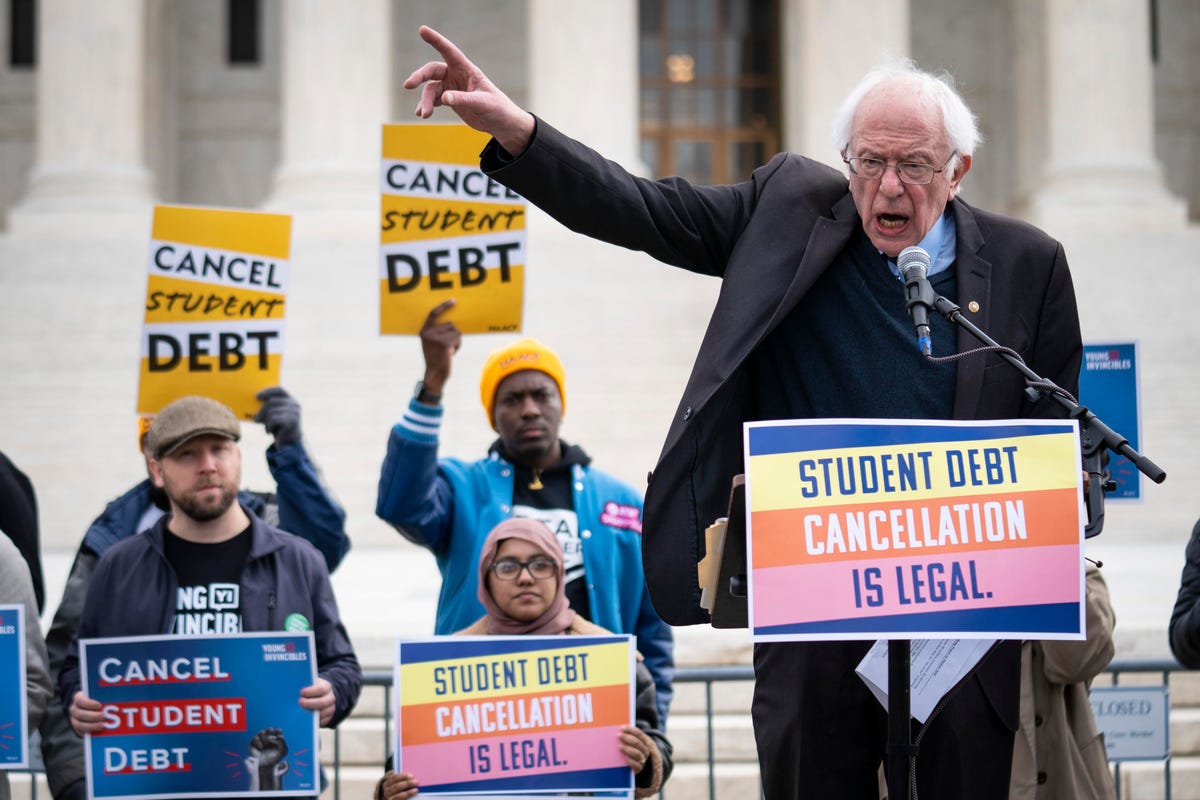The halt on student loan payments had helped many during the pandemic (which while officially almost ended is still on the pace of killing 129,000 people in the US every year, in case you wondered what was going on). When businesses were closed and work often dangerous, the pause was a big help.
But as the pause has been extended eight times, it’s interesting to see who benefited most. According to a Brookings Institution analysis by Sarah Turner, a university professor of economics and education at the University of Virginia, it “has benefitted affluent borrowers the most.”
It comes down to an economic analysis, of course, and some assumptions. One is that if you don’t have to spend money, you can in theory save or invest it. The more income and savings you have, the more you can put money to work for you. As interest rates climb — there are savings accounts paying well above 4% and certificates of deposit with yields of more than 5% according to Bankrate.com — savings can make even more.
While money reproduces itself at faster rates, inflation has a reducing effect on existing fixed debt. The higher it goes, the less value money has because it can’t buy as much as it used to. Debt like that of student loans is fixed amounts. The money is worth less and yet that’s how the borrower pays back the debt that was made when money was worth more. You essentially get to have taken more valuable money in the past and are now paying it back with money of lower value.
Student borrowers who came from wealthier families ironically tended to have larger student loan balances. They’re more likely to have attended elite and more expensive schools and continued their education into graduate degrees where they were allowed to borrow even more. They weren’t eligible for the need-based financial aid available to lower-income families, and they were more likely to have higher incomes, with the greater prevalence of graduate degrees.
In short, these matriculated persons had significantly larger monthly loan payments than average. When the pause happened, they had money to put into savings to reap the growing interest rates available. The rates weren’t as high as inflation, but they did help reduce the impact, assuming people did invest and not spend the extra. The inclination to put money to work is typically more ingrained in higher income families.
“As a result, while households across the income distribution benefit from pausing payments and interest, the total value of the pause is largest for households in the top deciles,” Turner wrote.
For example, 5.3% of households in the top decile of family incomes had student loan debt. But they represented 9.9% of total student loan payments. Looking somewhere in the middle, at the fifth decile, 13.3% of households had student debt but together they were only 12.0% of payments. In the second decile, so much lower income, 7.0% of households had student debt but only 3.9% of payments.
That is not to say the people at the lower end had an easier time. Far from it. They had the fewest resources. Those in the middle could well have been struggling. The irony, again, comes at the top, where they were likely paying the most per person on the average, but had the most to put into payments and gained the most when the payments were halted.
What happens going forward? There’s at least some chance the Biden administration could be blocked from extending the pause anymore, given a lawsuit that SoFi, a private bank, filed in March, as the Associated Press reported. Lower income borrowers will face trouble. Almost 17% of federal student loans were delinquent by more than 30 days at the end of 2019, as Turner says. That’s about 3.3 million borrowers. Another 2.7 million were in loan forbearance, allowing them to temporarily stop paying. That will come to an end.
There are programs that can held, but enrolment in them increased “only slightly” since the pandemic. It may be borrowers assumed that the Biden administration could make a loan forgiveness program stick, although it’s not clear that plan will make it through the courts. And people still would have to get through the application process, which is supposedly difficult, especially with required income certification.
Turner argues that the programs to make repayment more manageable need increased resources to help people get the assistance they need with adequate customer support.
Read the full article here


